Whether you’re building an internal communication plan from scratch or refining your existing approach, this is your go-to internal communication guide for creating high-impact, employee-first internal communications that support your people—and your business.
If you’re unsure how to move your internal comms forward in 2025, you’re not alone. With tighter budgets, shifting business priorities, and rising employee expectations, many organizations are struggling to keep communication clear, consistent, and impactful.
When internal communication breaks down, the cost is real: missed deadlines, misalignment, low morale, and high turnover. But when done well, internal communications boost productivity, increase engagement, and reduce churn—without requiring massive investment.
This comprehensive internal communication guide gives you everything you need to level up your strategy. Inside, you’ll find the latest internal communication trends, practical internal communication techniques, real-world examples, and a breakdown of the most effective types of internal communication to use in 2025 and beyond.
Book a demo to learn more about ContactMonkey’s internal communication solutions. Create interactive emails, newsletters, and surveys. Track, measure and optimize campaign performance.
Ready to upgrade your tools? See how you can transform communications with modern email, newsletters, surveys, and analytics tools.
Take a self-guided tour of ContactMonkey
See how our key features can streamline your internal communications.
Take product tour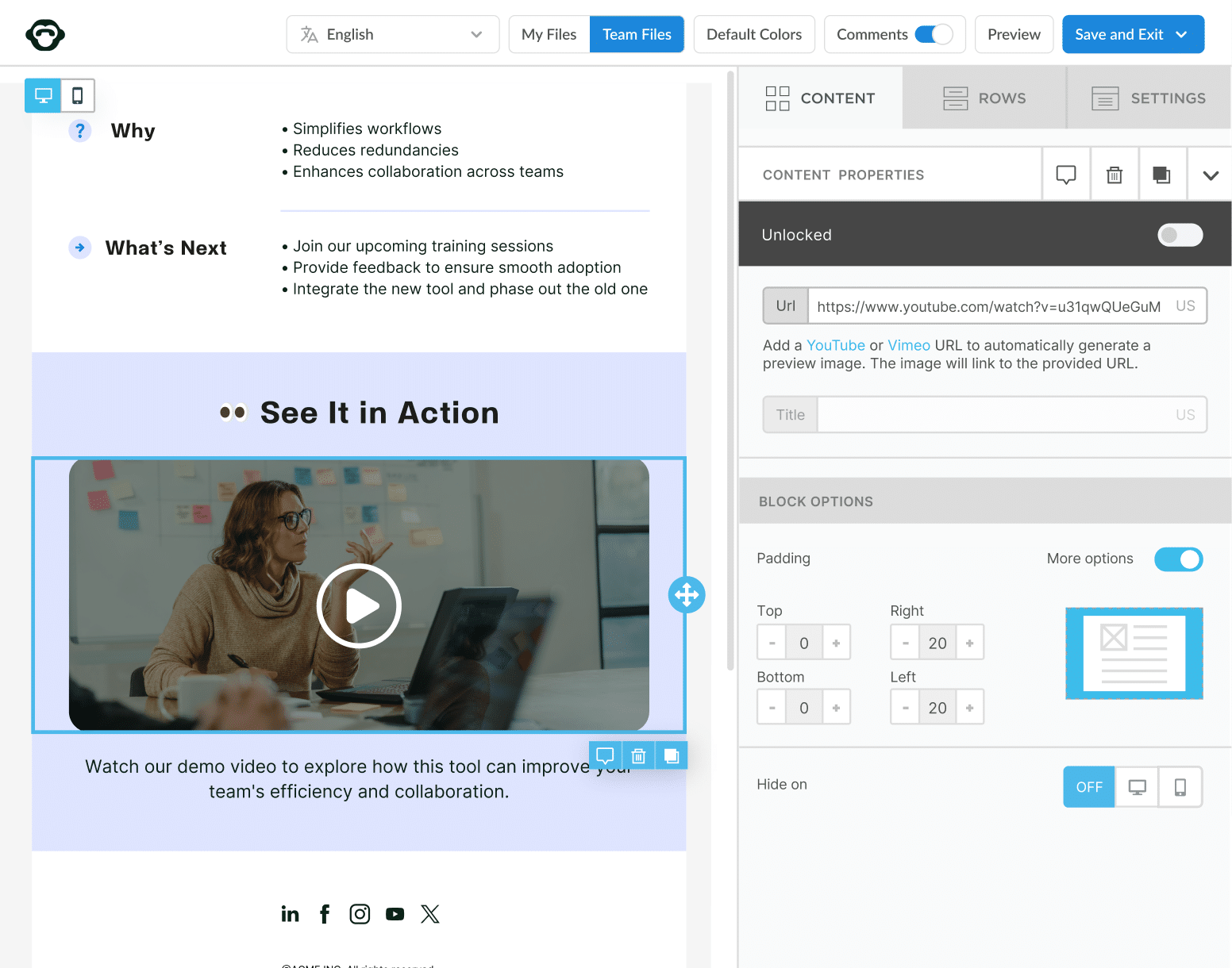
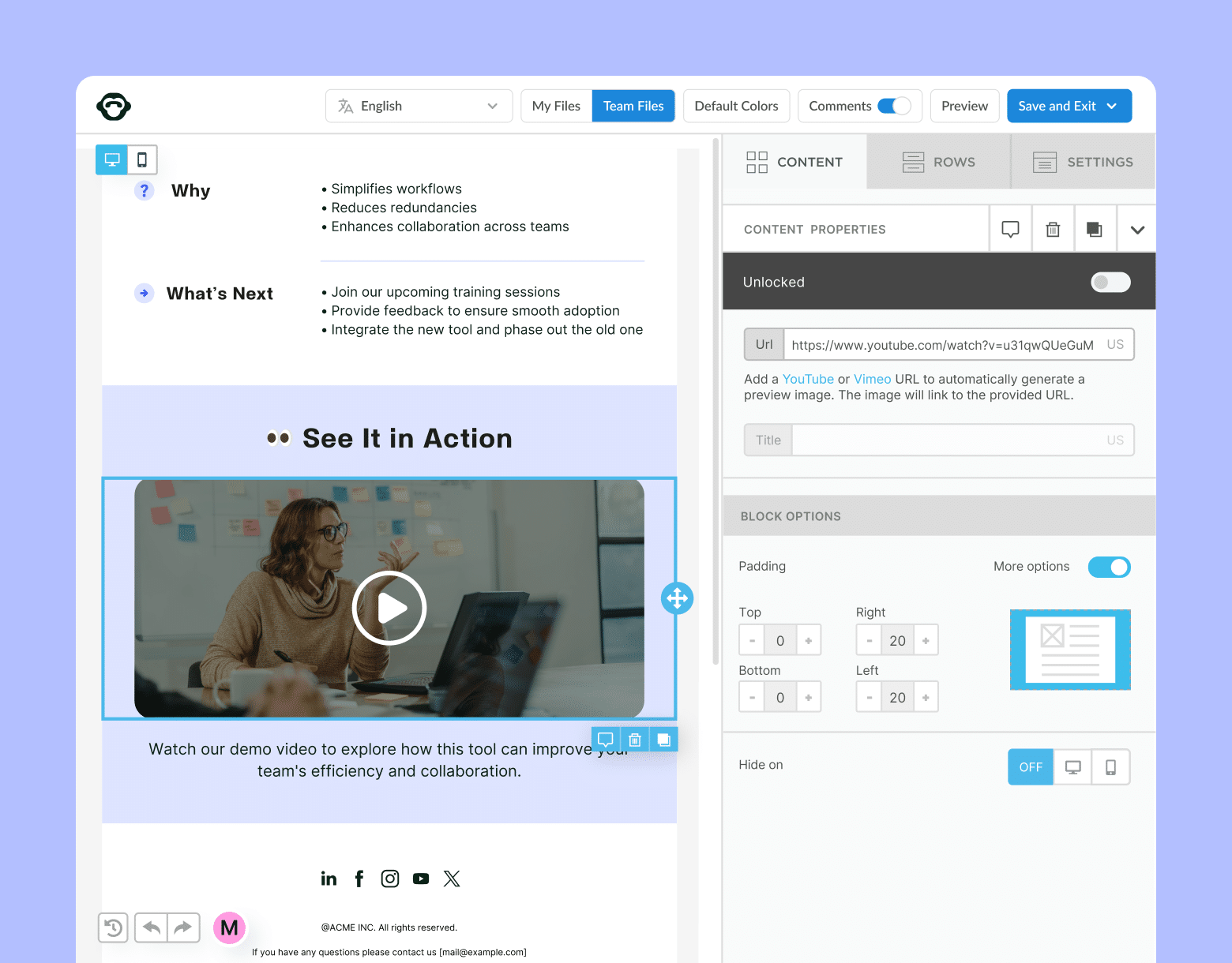
What Is Internal Communication?
Internal communication is the strategic flow of information within an organization that keeps employees informed, aligned, and engaged. In 2025, strong internal communications are essential for navigating change, maintaining trust, and driving performance. As hybrid work, digital transformation, and employee expectations evolve, internal comms helps shape culture, support clarity, and strengthen connections—especially across remote and frontline teams.
In a world where communication is the difference between lagging success and accelerated growth, effective internal communication techniques are truly a competitive advantage. And, this internal communication guide will outline these techniques so you can elevate your practice.
Why Is Internal Communication So Important in 2025?
Without strong internal communications, employees are left guessing. Messages get missed, priorities become unclear, and trust in leadership erodes. Teams work in silos, duplicate efforts, and disengage. Over time, this breakdown leads to lower productivity, higher turnover, and a culture of confusion, where no one knows what’s going on or why it matters.
Here’s why internal comms is so important in 2025:
- It connects people: Internal communication ensures employees—whether remote, hybrid, or frontline—stay aligned and informed through consistent messaging across trusted internal communication channels.
- It builds trust: Transparent, timely internal communications help reduce confusion, foster psychological safety, and strengthen employee confidence in leadership.
- It shapes culture: A strong internal communication strategy reinforces values, highlights wins, and keeps your workplace culture cohesive across every department and location.
- It improves engagement: Effective internal comms support employee motivation by promoting feedback, recognition, and inclusion—key drivers of engagement in 2025.
- It drives business outcomes: When internal communication objectives are aligned with company goals, organizations see better collaboration, faster decision-making, and measurable growth.
- It’s a competitive advantage: In 2025, companies with agile, secure internal communication systems are more resilient, adaptable, and better equipped to navigate constant change.
According to Gallup, business units in the top quartile of employee engagement achieve 23% higher profitability compared to those in the bottom quartile.
Modern internal comms and measurement tools
No design or technical expertise needed. Save time, increase engagement, and dazzle your employees with fun and interactive communications.
Explore all features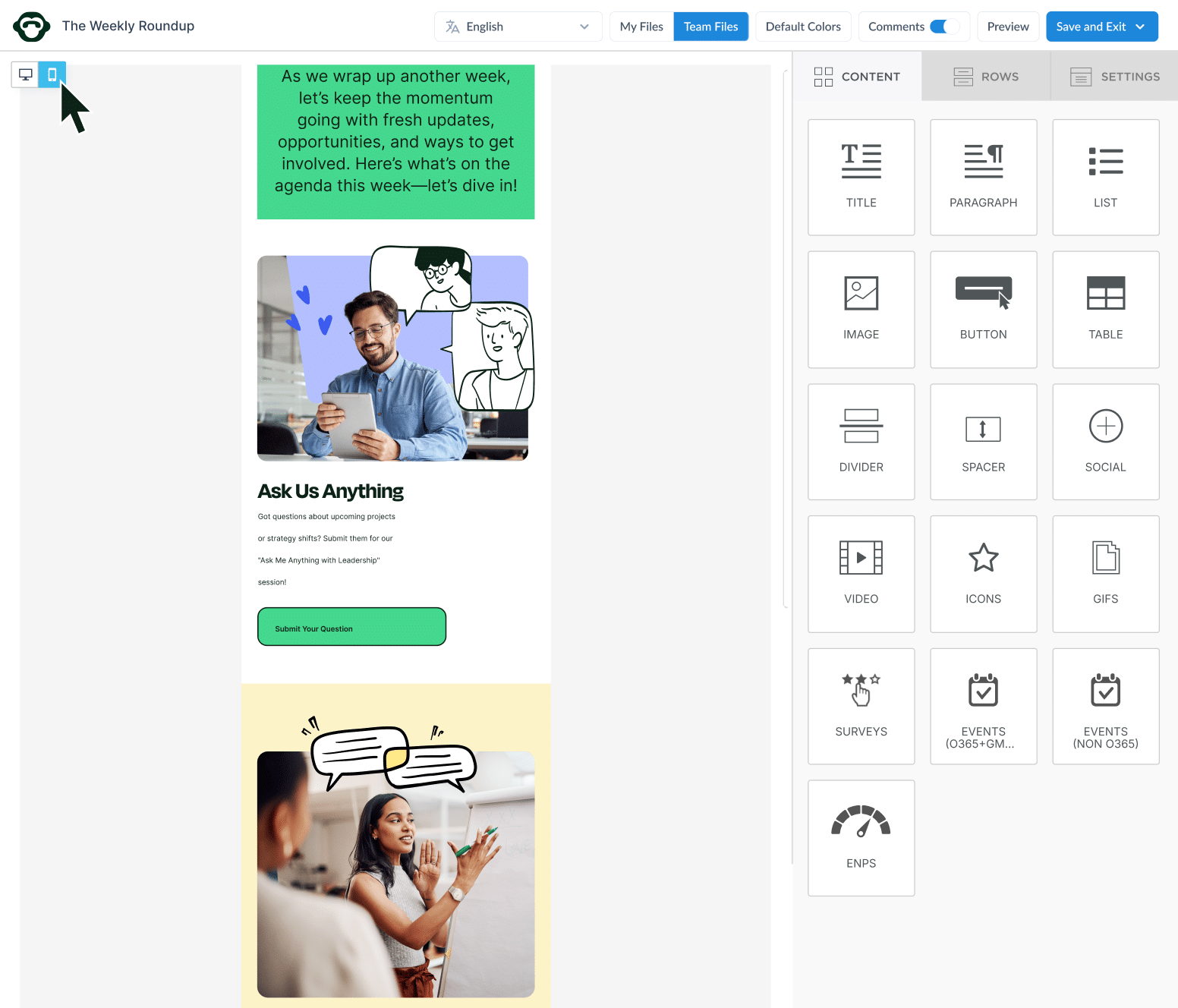
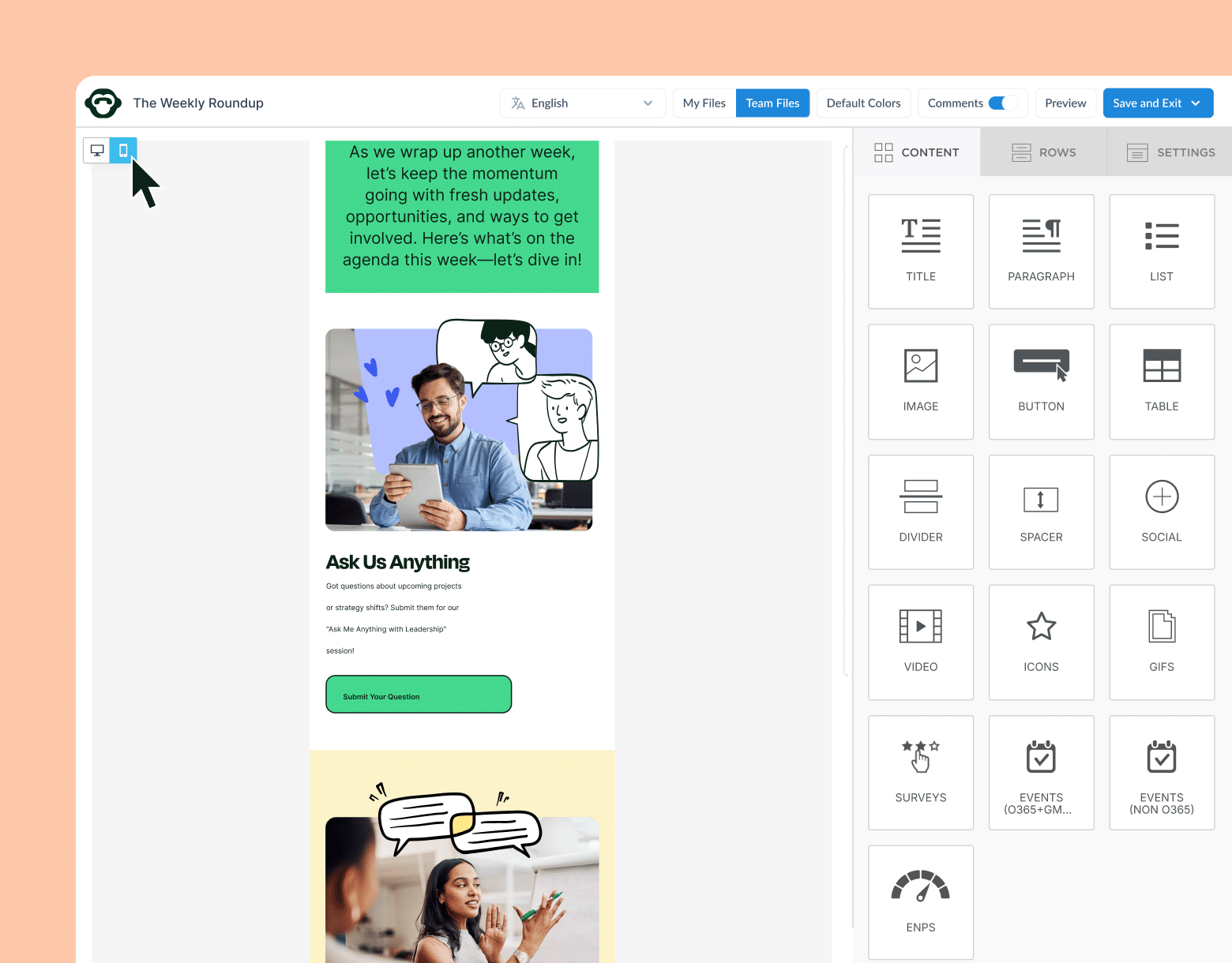
Internal Communication Trends
Here’s what your internal communication guide should account for when it comes to the top internal communication trends shaping 2025:
- Hyper-personalization: No more “Dear Team”—targeted messages by role, location, or language.
- Multi-channel delivery: From email and SMS to intranets, mobile apps, and digital signage.
- AI-powered comms: Generative AI drafts messages, while algorithms optimize send times and segment lists.
- Secure internal communication: Data privacy isn’t optional—secure channels are now a default requirement.
- Employee experience first: Comms aren’t just informative; they’re designed to be delightful and inclusive.
Objectives of Internal Communication
So what’s the purpose behind all this internal comms effort? Your internal communication guide should be built around these core internal communication objectives:
- Align employees with company goals
Keep everyone moving in the same direction. Use your internal communication strategy to share quarterly updates, company milestones, and leadership priorities.
Example: Send employee newsletters with embedded CEO video messages to reinforce vision and direction. - Enhance employee engagement
Great communication doesn’t just inform—it inspires. Use channels that invite interaction and check in frequently on how employees are feeling.
Example: Launch two-click pulse surveys asking, “Do you feel connected to your team this week?” - Support change and transformation
When things shift—new tools, reorganizations, M&A—internal communication becomes your stabilizer. Build trust by explaining the “why” and what comes next.
Example: Send dedicated email sequences that walk employees through upcoming changes, timelines, and available support. - Reinforce culture and core values
Internal comms should reflect who you are as a company. Celebrate wins, highlight employee stories, and tie everything back to your values.
Example: Feature monthly shoutouts or team highlights that connect real work to your organization’s mission.
Types of Internal Communication
Just like every solid internal communication guide, this one too breaks down the different types of internal communication—and how each one serves a specific role in keeping your organization connected and aligned:
- Top-down communication: Leadership to employees (e.g., CEO updates, HR announcements).
- Bottom-up communication: Employees to leadership (e.g., surveys, suggestion boxes).
- Peer-to-peer communication: Between colleagues (e.g., Slack, team channels).
- Crisis communication: Real-time updates during emergencies.
- Change communication: Comms tied to transformation, growth, or reorgs.
- Operational communication: Day-to-day updates, processes, and tasks.
Example: Launching a Company-Wide Technology Rollout
Your organization is introducing a new project management tool across all departments. To ensure a smooth rollout, you use multiple types of internal communication in a coordinated campaign:
- Top-down communication: The CEO kicks things off with an all-staff email explaining the “why” behind the rollout and how it supports company goals. HR follows up with a company-wide policy update.
- Bottom-up communication: Employees are invited to submit feedback through a quick pulse survey embedded in the weekly newsletter, and a virtual suggestion box is opened for rollout improvement ideas.
- Peer-to-peer communication: Teams start their own Slack threads to troubleshoot issues, share tips, and celebrate quick wins with the new platform.
- Crisis communication: When a bug in the software causes a temporary outage, IT sends a real-time SMS alert with instructions and follow-up timelines to all employees.
- Change communication: The Internal comms team creates a campaign outlining what’s changing, when, and how. They include training schedules, FAQs, and who to contact for support.
- Operational communication: Daily reminders go out via email and Slack about upcoming training sessions, login instructions, and how-to resources for using the new tool.
Unlock Internal Comms Superpowers
Discover why 10,000+ rely on us. See the internal email and employee newsletter platform in action.
Book demo

Internal Communication Challenges and Solutions
This internal communication guide tackles the biggest challenges facing modern internal comms professionals—and shows you exactly how to overcome them.
- Information overload
When employees are bombarded with irrelevant messages, they tune out. This weakens engagement and clutters your communication ecosystem.
Solution: Curate your content and use audience segmentation tools like ContactMonkey to ensure the right people get the right message, avoiding inbox fatigue and message burnout. - Reaching deskless or remote workers
Frontline and remote employees often miss important updates due to a lack of access or mobile-friendly formats.
Solution: Your internal communication strategy should include SMS messaging, mobile-first email templates, and digital signage to reach all employees, wherever they are. - Inconsistent messaging across departments
When different teams share conflicting information, trust erodes and confusion sets in.
Solution: Use standardized message templates and centralized comms calendars to ensure consistency across departments and channels—key elements of any strong internal communication guide. - Adapting to new technologies
Rolling out new platforms without support or clarity causes frustration and disengagement.
Solution: Invest in intuitive internal communication tools—like ContactMonkey—that integrate seamlessly with Outlook or Gmail. This lowers the learning curve and improves adoption across teams.
BONUS: This article on internal communication challenges and solutions you can take advantage of can give you a deeper dive on this topic.
Key Internal Communication Channels
This internal communication guide for 2025 highlights the most effective internal communication channels companies are using right now to reach and engage employees, no matter where or how they work:
- Email: Still the backbone of internal communication. Use it for newsletters, updates, and company-wide announcements. Platforms like ContactMonkey let you track open rates, clicks, and read time in real time.
- Intranet: Best for storing long-form content like HR policies, onboarding documents, and reference materials. A key part of any modern internal comms ecosystem.
- SMS: Perfect for urgent or time-sensitive updates—like emergency alerts, shift changes, or weather closures—especially for frontline or deskless teams.
- Video: Great for adding a human touch. Think CEO video messages, leadership updates, or training walkthroughs. Video content helps make communications more personal and memorable.
- Chat apps (Slack, Teams): Ideal for quick updates, team conversations, and real-time collaboration. Use them to supplement—not replace—more structured internal communication.
- Surveys and polls: Essential for two-way communication. Embedded pulse checks and feedback polls help you gather real-time employee sentiment and make informed decisions.
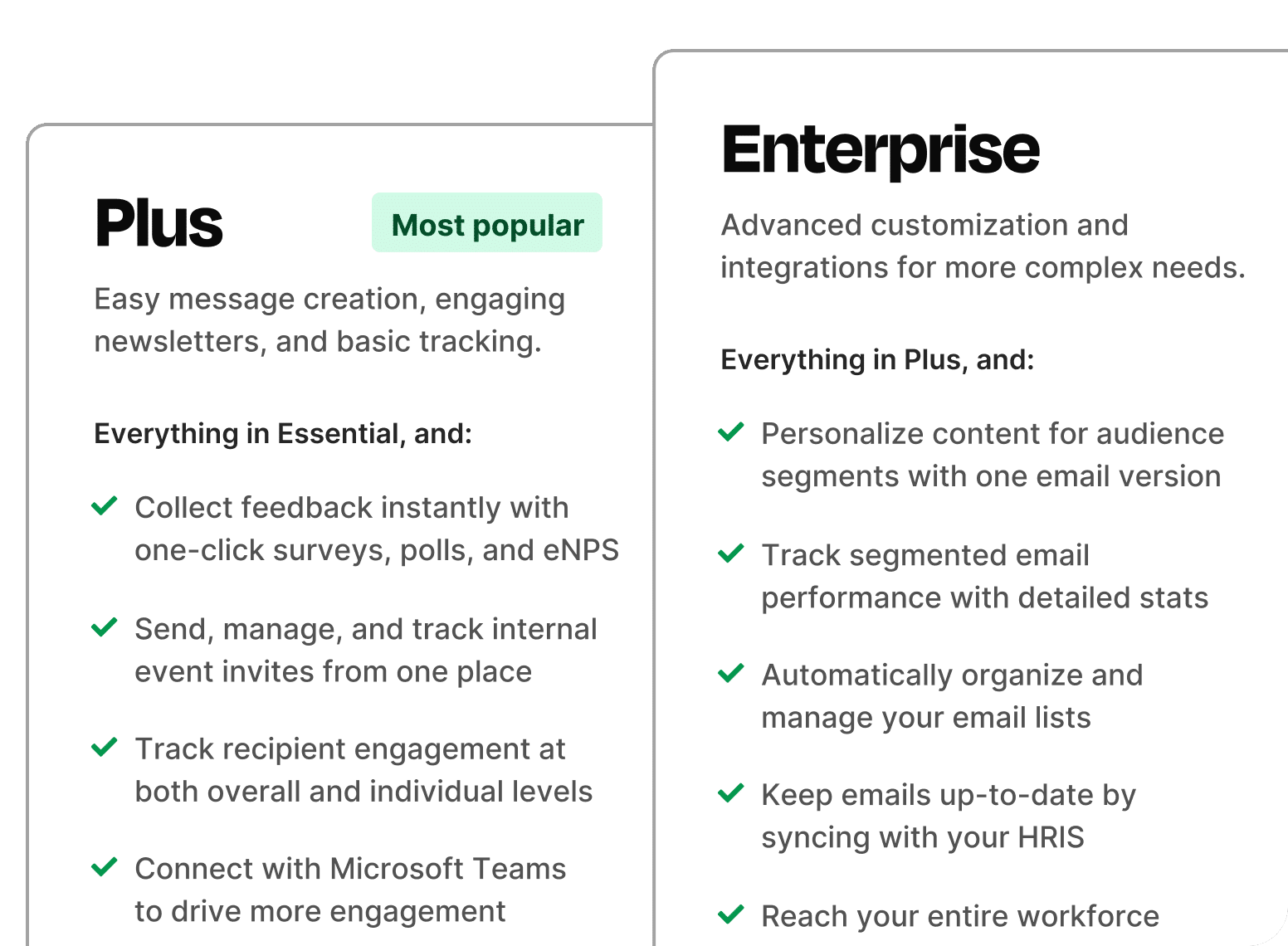
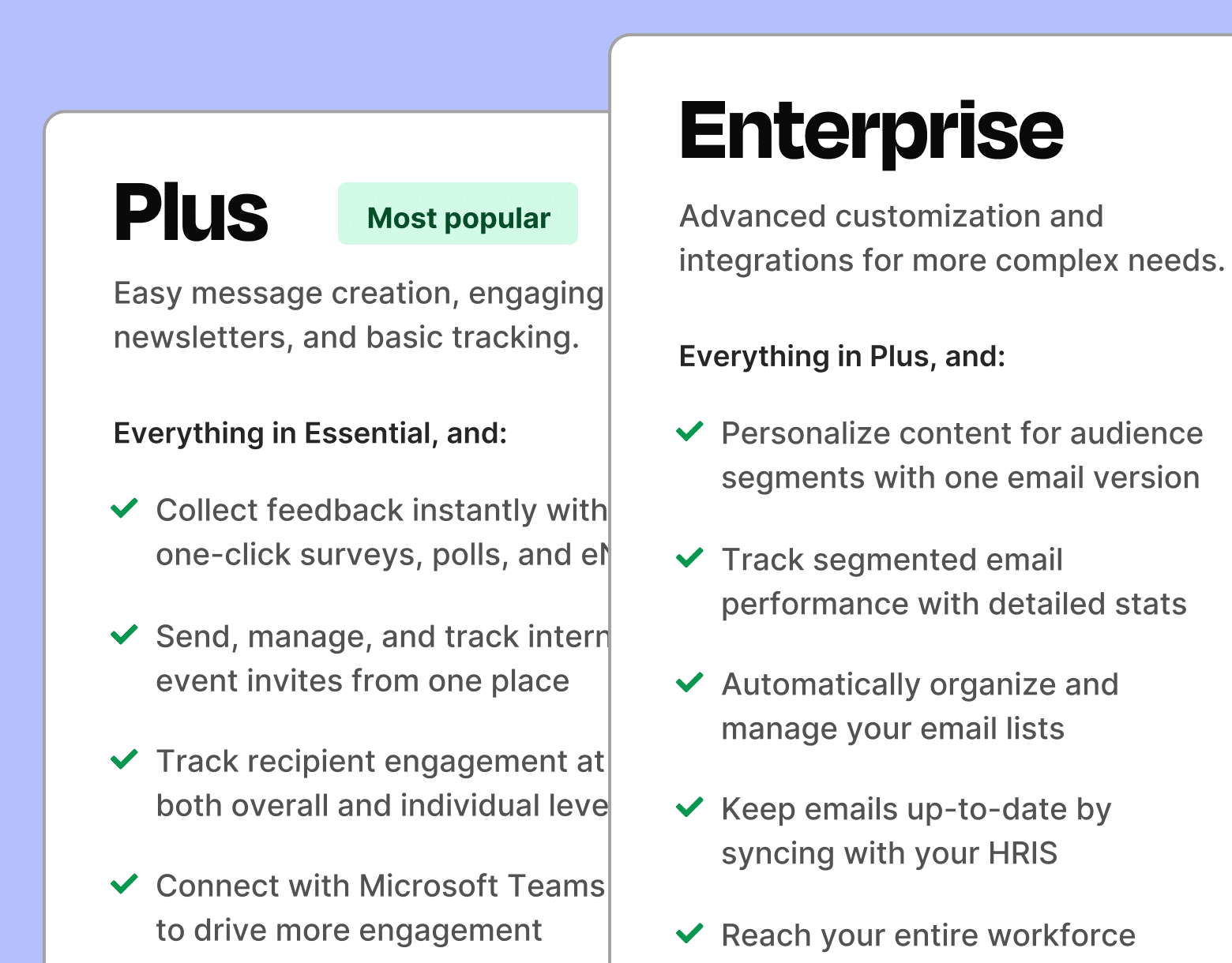
Must-Use Internal Communication Tools and Platforms
The right internal communication tools and platforms make or break your strategy. Look for:
- Email builders with tracking
Use tools like ContactMonkey to create professional internal emails with a drag-and-drop builder, then track key metrics like open rates, click-throughs, and read time—right from Outlook or Gmail. - Pulse survey tools
ContactMonkey and Culture Amp make it easy to embed short employee engagement surveys directly into your workflow, helping you gather feedback in real time and monitor sentiment over time. - Audience segmentation features
With ContactMonkey, you can segment internal emails by department, location, role, or employment type—so HR updates go to full-time staff, and operations memos reach only the field teams. - Mobile communication apps
Beekeeper and Workvivo are designed specifically for reaching frontline and deskless employees, offering mobile-first internal communication platforms that support messaging, updates, and community features. You can also use ContactMonkey’s SMS Communication feature if you’re deploying multi-channel communications. - Secure internal communication software
Platforms like ContactMonkey and Simpplr offer encrypted communications and role-based access control—ideal for organizations handling sensitive or regulated employee information.
How To Develop an Internal Communication Strategy and Plan
To build a strong foundation, start with an internal communication guide that outlines the core strategy, channels, and feedback loops needed to connect with employees across the organization.
Then move on to creating a clear, repeatable internal communications plan.
Here’s the framework:
- Assess where you are
Audit your current channels, tools, and engagement metrics. - Set clear objectives
Are you improving engagement? Reducing turnover? Supporting change? - Identify your audiences
One size doesn’t fit all. Segment by team, location, or employee type. - Choose your channels and tools
Match message urgency to the best channel (e.g., don’t send policy updates via chat). - Craft consistent messages
Use tone guidelines and branded templates. - Gather feedback
Run surveys, set up listening sessions, and monitor data to improve.
Take a self-guided tour of ContactMonkey
See how our key features can streamline your internal communications.
Take product tour

Internal Communication Best Practices to Get in Place
Embedding these internal communication best practices into your everyday ensures your efforts are sustainable, measurable, and aligned with your business goals. These internal communication techniques separate the average from the exceptional:
- Personalize your messages: Tailor internal communication by using employee names, roles, and relevant content. Personalization increases engagement and shows employees that messages are meant for them—not just “everyone.”
- Maintain consistency and clarity: Every message should have a clear goal. Avoid jargon and keep the tone conversational. Consistent communication builds trust and strengthens your internal communication strategy.
- Use interactive content: Boost engagement with embedded GIFs, videos, polls, or clickable CTAs. Interactive formats make internal messages more compelling and easier to act on.
- Enable two-way communication: Make space for feedback. Let employees respond, vote, comment, or react. Two-way internal communication builds a culture of listening and transparency.
- Refresh content regularly: Keep your internal communication channels current with fresh content. A stale intranet or outdated newsletter erodes trust and interest. Use a content calendar to stay consistent.
- Offer multilingual communication: Support diverse teams by including translation and localized messaging in your internal communication plan. Inclusive communication improves reach and accessibility.
- Train your managers: Managers are your most direct internal communication channel. Equip them with talking points, templates, and coaching to ensure key messages are reinforced at the team level.
How To Measure and Improve Internal Communication
If you’re not measuring, you’re guessing. Here’s how to measure communications and improve performance:
- Open rates and click-throughs: Track how employees are interacting with your internal emails. Tools like ContactMonkey offer real-time metrics to benchmark open rates, click-throughs, and read time—so you know what’s landing and what’s not.
How to improve performance: Write clear, compelling subject lines, personalize content by team or role, and send at optimal times using analytics or timezone features. - Survey results: Use quarterly employee engagement surveys to measure understanding, morale, and alignment with leadership and company goals.
How to improve performance: Keep surveys short and specific, align questions with your internal communication objectives, and share results along with planned actions to build trust. - Pulse checks: Send quick, in-the-moment polls like “Did you feel informed this week?” to capture ongoing sentiment.
How to improve performance: Embed one-click polls directly into internal emails. Rotate topics regularly and follow up with a summary of insights and next steps. - Feedback loops: Monitor how frequently feedback is gathered—and acted upon—across communication channels.
How to improve performance: Establish a consistent feedback cadence and always close the loop with “You said, we did” updates to show employees their input drives change. - Engagement across channels: Track employee interaction with internal content across email, SMS, intranet, chat apps, and video.
How to improve performance: Use analytics to identify top-performing formats and channels. Then adjust your internal communication strategy to focus on what drives the most engagement.
Get powerful email analytics and reporting features
Know exactly who is opening and engaging with your employee communications and company newsletters.
Explore analytics & reporting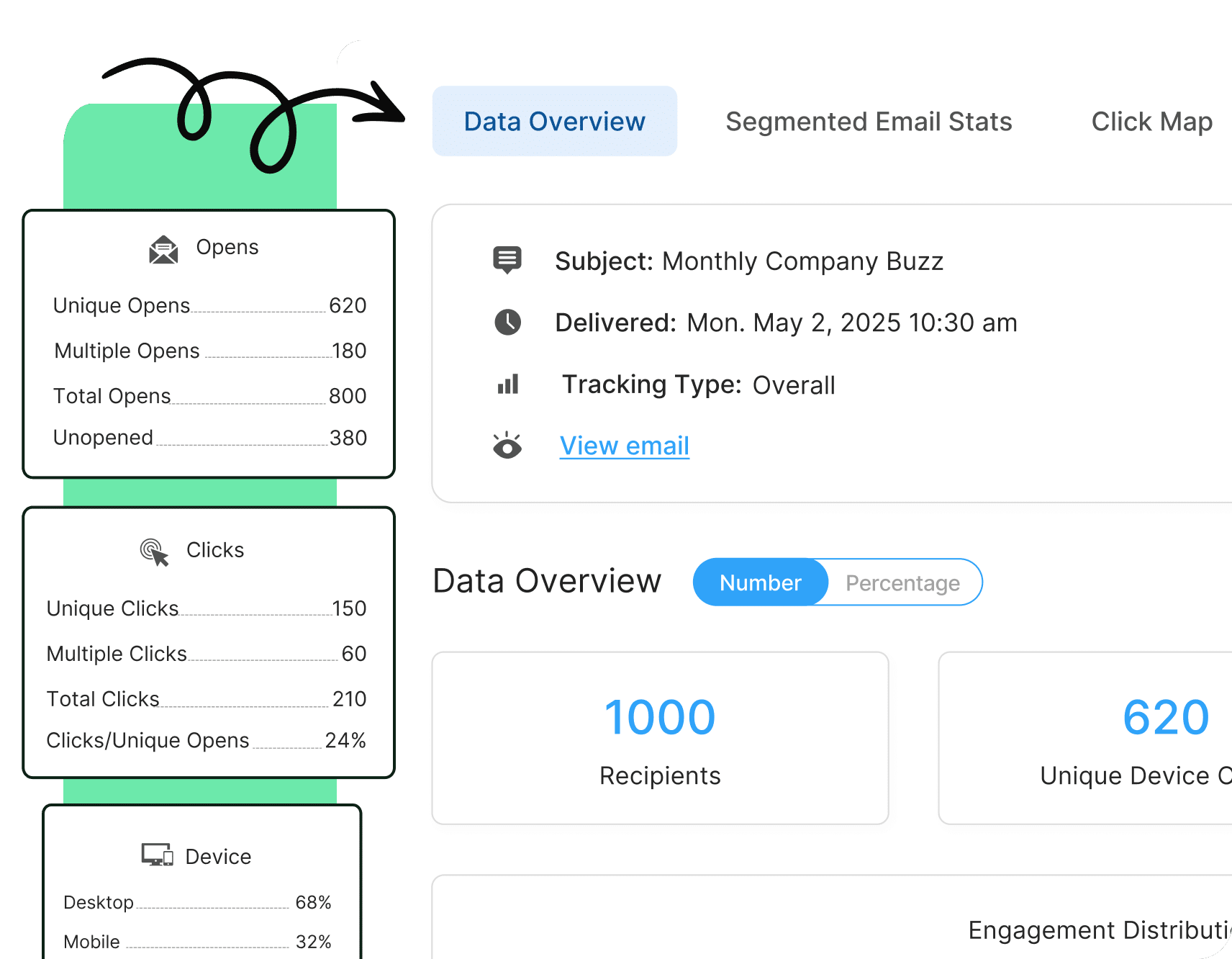
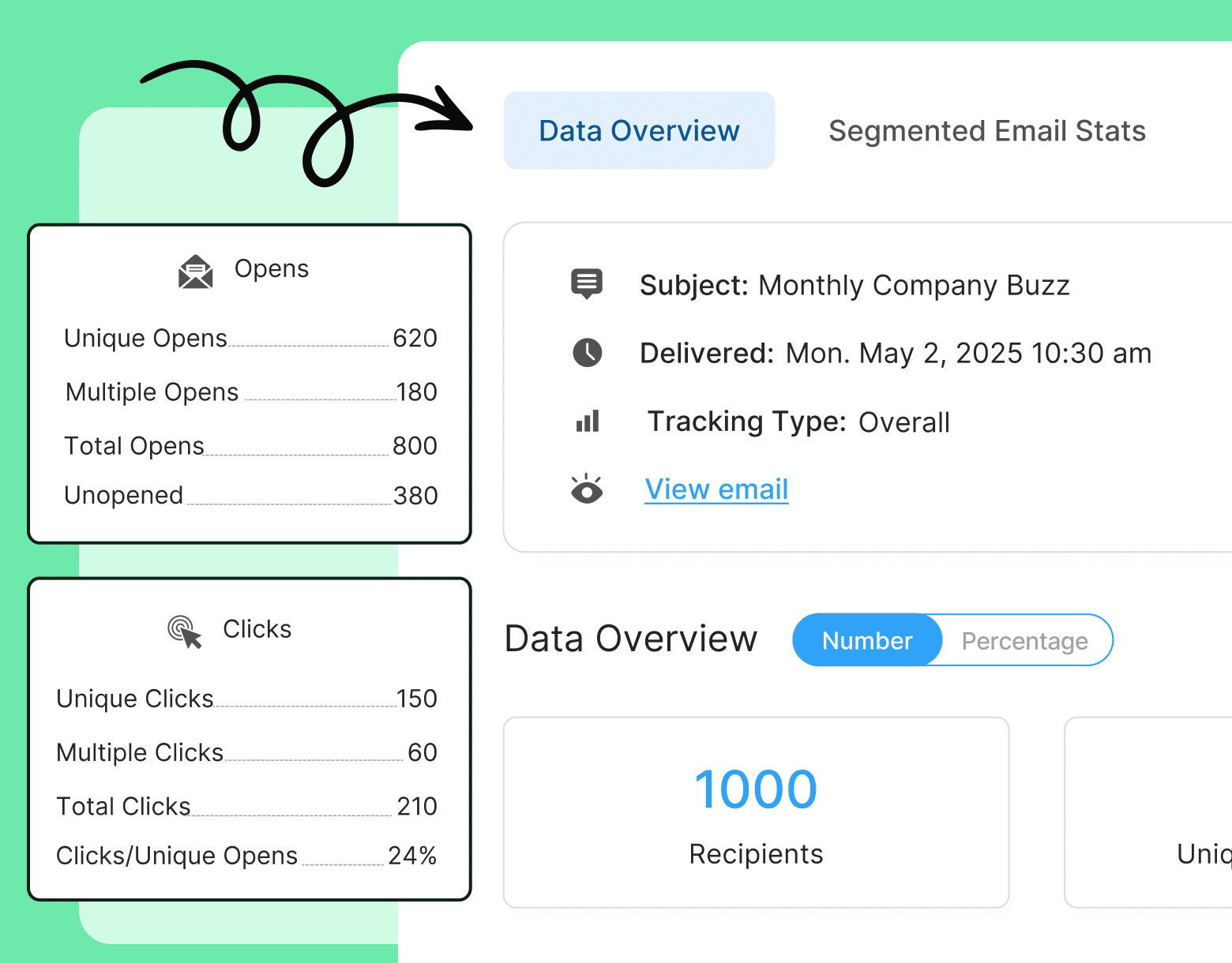
Case Studies and Internal Communication Examples
Below are real-world internal communication case studies and examples from leading organizations that have transformed the way they connect with their teams. These case studies show how intentional, tech-enabled internal comms can boost engagement, build trust, and drive measurable business impact.
Joules
Result: Achieved internal email open rates of over 90%
Use case: Joules used ContactMonkey to design visually engaging newsletters and track employee interaction. By optimizing content based on analytics, they dramatically improved email engagement across the company.
Thumbtack
Result: Reduced unsubscribe rates after switching from a marketing tool to ContactMonkey
Use case: Thumbtack transitioned away from Mailchimp to ContactMonkey for internal email, creating more employee-relevant content. As a result, they saw more consistent engagement and a healthier internal audience list.
Mettler Toledo
Result: Saved hours each week on email design and deployment
Use case: By using ContactMonkey within Outlook, Mettler Toledo streamlined their internal email process, allowing teams to send branded communications without relying on outside design help.
For more real-life case studies, check out our customer stories!
The Future of Internal Communication in 2025 and Beyond
As technology and employee needs evolve, internal communication guides will adapt too. This year, we’re making room for automation, personalization, and multi-channel messaging.
Where are things headed? Here’s what’s next:
- AI-powered content creation and analytics: Internal comms teams will use generative AI to create personalized comms at scale and instantly analyze performance data.
- Employee-first comms: Expect more human storytelling, mental health check-ins, and culture-building efforts baked into messaging.
- Smart segmentation: Dynamic lists that update in real time based on job changes, team moves, or onboarding status.
- Omnichannel automation: Tools that send one message across email, Slack, SMS, and digital signage—at once.
What to Use ContactMonkey For in Your Internal Comms
If you’re ready to level up your internal communication, ContactMonkey is a go-to tool for internal communicators. Here’s how internal comms teams are using it in 2025:
Build and send stunning internal emails
Create engaging, mobile-responsive emails directly from Outlook or Gmail—no designers, no developers. Just drag, drop, and go through the Email Template Builder Feature.
Track what’s working (and what’s not)
Get real-time analytics on open rates, click-throughs, read time, and more. Know exactly what messages land—and which ones fall flat through the Analytics Dashboard Feature.
Segment your audience
Send the right message to the right employee. Segment by department, location, employment type (FTE, contractor, etc.), and more, thanks to the List Management Feature.
Reach frontline and remote employees
Not everyone sits at a desk. With SMS Communication capabilities and mobile-optimized content, you can connect with your entire workforce—no matter where they are.
Collect feedback instantly
Embed pulse surveys, polls, and eNPS into your emails to make communication two-way. With Employee Feedback Features, there are no extra tools needed.
Want to see how seamless internal comms can be? Book a 15-minute call and discover how ContactMonkey helps you send smarter messages, save time, and prove your impact with real-time engagement data.


